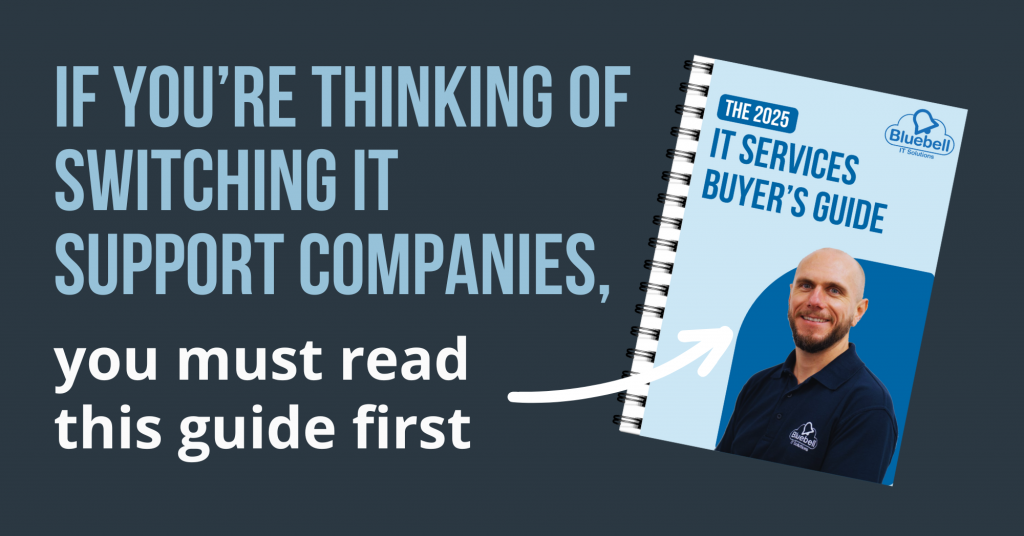Published on 15 April 2025

Your business relies on IT services to keep operations running smoothly, but not all IT providers are created equal. If you’re experiencing frequent tech issues, slow response times, or security concerns, it might be time to rethink your provider. Sticking with the wrong IT partner can lead to downtime, inefficiencies, and even security risks holding your business back instead of supporting its growth.
Recognising the warning signs early can save your business time, money, and frustration. In this blog, we’ll highlight key indicators that it’s time to change IT service providers and how to find the right partner to meet your needs.
Frequent downtime and system outages are major signs it’s time to switch your MSP. A dependable IT provider should implement proactive monitoring tools like RMM (Remote Monitoring and Management) to identify and resolve issues before they impact your operations. If your current managed IT provider is constantly reacting to problems rather than preventing them, you risk decreased productivity and frustrated staff. According to BigPanda 2024, the average cost of IT downtime is over $5,600 per minute. A staggering loss for any business.
When IT problems arise, quick support is non-negotiable. If your outsourced IT support takes hours or even days to respond, it’s a sign of inadequate resourcing or prioritisation. A competent IT partner should offer guaranteed SLAs (Service Level Agreements), 24/7 support, and efficient ticketing systems. For example, if your helpdesk requests frequently go unanswered or require constant chasing, it may be time to change IT service providers and seek a team that values your business.
In today’s cyber landscape, reactive support just doesn’t cut it. An effective technology partner should regularly update software, patch vulnerabilities, and offer tools like XDR for real-time threat detection. If your IT provider fails to advise on security best practices or doesn’t carry out regular audits, your business could become an easy target. IBM’s 2024 report showed the average cost of a data breach is now over £3.28 million, a risk you can’t afford.
Every business has different IT needs. If your provider delivers standardised, cookie-cutter solutions without understanding your operations or growth plans, it’s time to consider switching MSPs. A good IT provider should customise services such as cloud migration, remote working solutions, and compliance planning. For example, a retail business will have vastly different tech requirements than a financial firm and your provider should reflect that.
As your business expands, your IT systems must scale alongside it. A stagnant MSP can quickly become a bottleneck. Look for signs such as resistance to adopting cloud solutions, lack of automation, or poor advice on emerging technologies. Your provider should help future-proof your business with scalable infrastructure, cybersecurity strategies, and digital transformation plans. Tools like Microsoft Azure can be instrumental here.
Strong communication is the backbone of any successful partnership. If your managed IT provider is vague about timelines, silent during incidents, or evasive about performance metrics, trust erodes. Transparency in reporting including system health dashboards and monthly reviews is a must. A reliable partner will walk you through each recommendation, ensuring you understand the impact on your business.
If your invoices are consistently higher than expected, with mysterious charges and line items, it’s a clear warning. Some outsourced IT support companies bundle hidden fees into “miscellaneous services,” leading to financial uncertainty. A quality MSP will offer clear contracts, flat-rate pricing, and detailed billing.
Compliance is especially critical for industries like healthcare, finance, and legal. If your IT provider doesn’t help you meet GDPR, ISO 27001, or industry-specific regulations, you’re risking audits, fines, and reputational damage. Look for a partner experienced in governance and compliance frameworks. Regular assessments and documentation should be part of the service, not an afterthought.
If disaster strikes—from cyberattacks to hardware failures a well-structured disaster recovery plan ensures continuity. A trustworthy IT service provider should conduct regular backups, test restore points, and implement solutions like cloud-based recovery and BCDR (Business Continuity and Disaster Recovery) tools. If your provider can’t explain how quickly you can recover lost data, your business is vulnerable.
If you recognise several of these warning signs, it may be time to explore new IT service providers. Look for a partner that prioritises reliability, security, and proactive support to ensure your business stays efficient and secure.
For more insights on choosing the right IT provider, view our 2025 IT Services Buyers Guide. It covers what to look for in an IT provider, helping you make an informed decision based on your business goals.


© 2025 Bluebell IT Solutions - All rights reserved
SEO and Website Design by Loop Digital